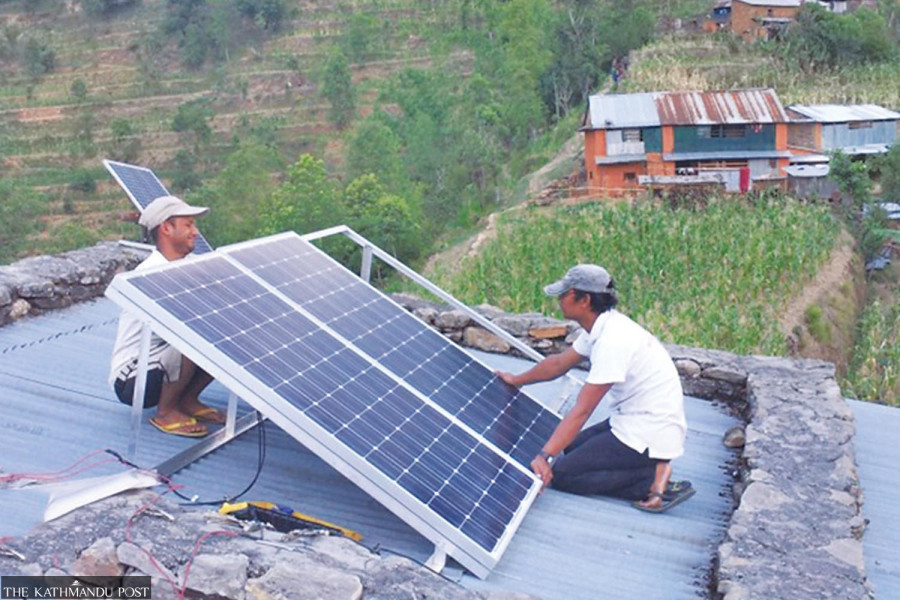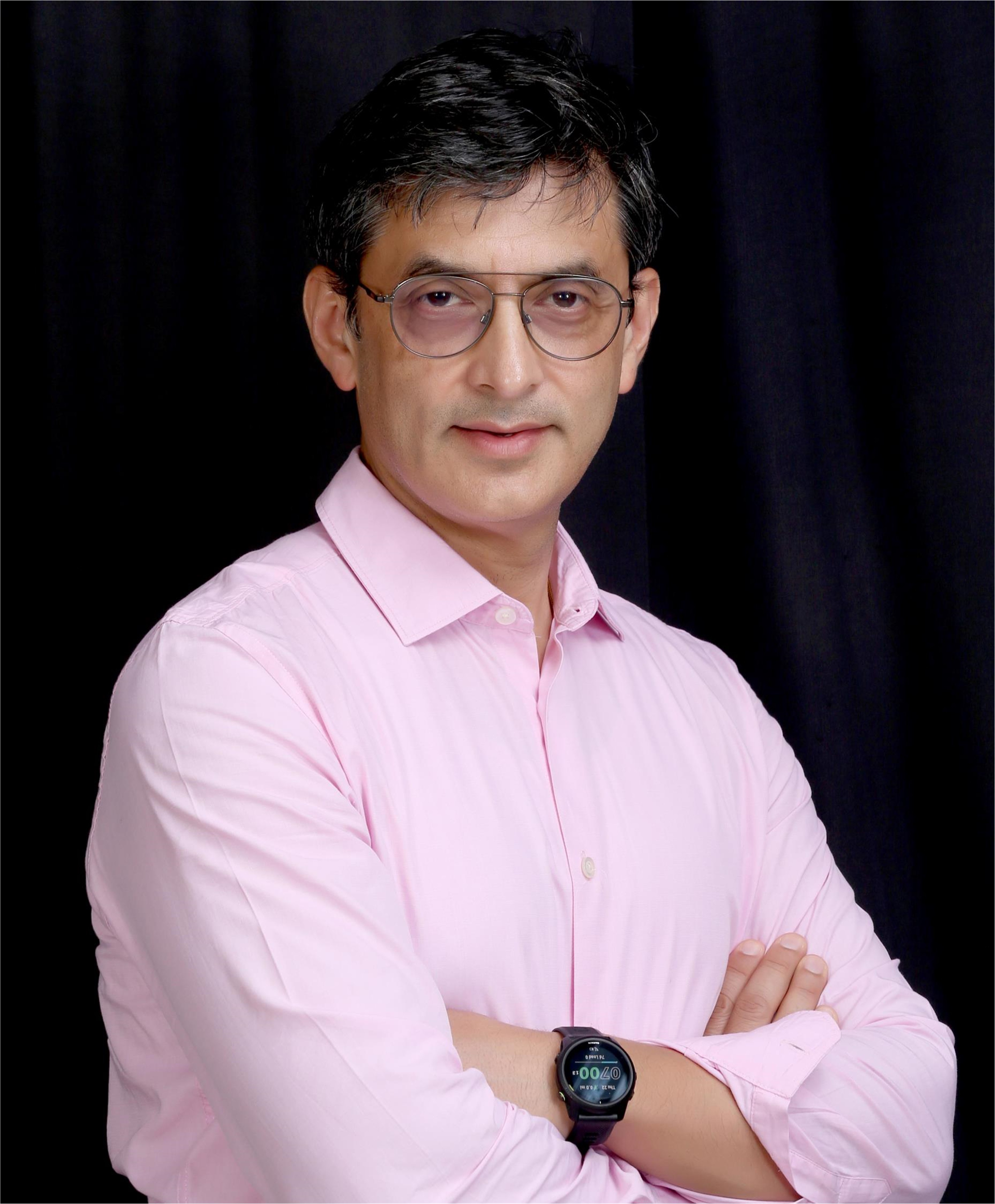Columns
Democratic citizen’s power
Distributed energy systems in homes will make power less expensive and highly democratic.
Bishal Thapa
The end of the Nepal Electricity Authority's (NEA) monopoly over the power sector is now in sight.
The NEA is Nepal’s state-owned power sector monopoly, established by an act of government several decades ago. It controls transmission, distribution and cross-border power trading. Generation has been partly liberalised and allows for private participation, but the state-owned enterprise dominates the segment. Although the Ministry of Energy, Water Resources and Irrigation still makes power sector regulations, the NEA as the only implementer of those policies serves as the de facto authority with the ability to choose what and how it applies them.
A monarch without the burden of a crown, the NEA remains one of the last examples of a state institution in Nepal’s young federal democracy that can still exercise authority without accountability. Could distributed clean energy solutions help democratise an institution that has proven more difficult to topple than the two-century old monarchy?
Energy transformation
A glimpse of the future that could help challenge the NEA’s authority comes from the state of Vermont in the United States. Vermont is in the north-eastern part of the US, bordering Massachusetts, New York, New Hampshire and Canada.
Green Mountain Power, a utility in Vermont, launched a programme earlier this month to strengthen the grid and reduce outages by putting batteries in customer homes.
“Call us the un-utility,” Mari McClure, chief executive of Green Mountain Power, said in a New York Times article that profiled the utility’s programme. “We’re completely flipping the model, decentralising it,” she added.
Green Mountain Power’s Zero Outage Initiative, one of the first utility programmes in the US, is aiming to improve the ability of its grid to withstand shock events, such as storms, so that customers continue to receive reliable power. It is seeking to enhance resilience by integrating energy storage at customer homes while also strengthening the distribution grid to withstand extreme weather events.
In regulatory filings, the utility submitted its plan to invest $280 million over three years, including $30 million for distributed energy storage at customer premises. Previously, the regulator had already approved a home battery programme that provides incentives for homeowners to install batteries at their residences.
Green Power Mountain found that it would be cheaper to serve reliable power by installing distributed renewable energy systems (such as solar) and batteries at their customers’ premises than to continue investing in transmission, distribution and centralised generation infrastructure alone. Their programme, the utility states, “like battery storage empowers customers, cutting carbon and costs for all.”
Though operating in very different contexts, the similarities between Green Power Mountain and the NEA are striking. Both are small utilities. Green Power serves approximately 270,000 residential, commercial and industrial customers. The NEA has approximately 4,800,000 customers, most of them residential just like with the Vermont utility. Like the NEA (except for when it imports electricity from India), Green Power supplies 100 percent carbon free electricity. The NEA’s supply sources are all hydro. Green Power Mountain’s is 70 percent hydro.
Delivering reliable power through difficult terrain while faced with the increased frequency of extreme weather events is a key challenge for both utilities. In its regulatory filing, Green Power Mountain reported that major storms had caused $115 million in damage across its service area, 60 percent of that in the last five years, 40 percent in just the last two years, and the $45 million in 2023 was the most yet.
Nepal is similarly on the front lines of the impacts of climate change, with increasing frequency and intensity of extreme weather events. Add that to an already vulnerable geolocation, inadequate and weak distribution network. Earthquakes and floods routinely disrupt power supply from hydro power plants. Even small storms are enough to damage distribution infrastructure, which then takes a long time to repair and for power supply to return.
Despite the similarities, it is striking how the NEA and Green Mountain Power are on such divergent paths. While Green Power is embracing the future, and integrating distributed energy solutions, the NEA is returning to the past, relying on centralised power plants, and investing in more distribution infrastructure (partly because cheap sovereign guaranteed finance for such projects is readily accessible and is being pushed).
Green Power Mountain’s approach was not shaped only by the allure of emerging clean energy technologies. Rather, having worked the analysis, they “realised that paying recovery costs and building more power lines to improve its system would cost a lot more and take a lot longer than equipping homes with batteries,” The New York Times reported.
Green Power Mountain’s Zero Outage Initiative, though innovative, is hardly new. It joins a growing movement that recognises the role distributed renewable energy solutions, such as solar, combined with storage at customer locations can play in managing peak loads, avoiding disruptions, increasing resilience, reducing costs and reducing power sector emissions.
Over two dozen states in the US are already offering customers with incentives and financing options to integrate home battery storage systems with their rooftop solar and allow it to interact with the grid. Australia, which has long championed such programmes, recently launched a $200 million grant programme to support customers acquire batteries for household solar.
Technology innovations and cost reduction have made distributed solar, wind and battery storage solutions much more applicable for homes and businesses, altering the way that power companies think about how they continue to serve customers. A study by Brattle Group, for example, concluded that “utilities could save up to $35 billion a year if they invested in smaller-scale energy projects like home batteries and rooftop solar panels that can be built more easily and quickly,” The New York Times reported.
The integration of distributed renewable energy and storage solution located at customer premises will enhance the quality and reliability of Nepal’s power supply, while reducing costs for customers. But the NEA continues to harden its stance against such options. It has, for example, unfairly distorted the government’s policy for solar rooftops in its implementation of solar net metering, thus making it commercially unviable for most customers. Its processes for granting approvals for customer’s solar rooftop are extremely poor, and discretionary, which makes it impossible for most customers to consider getting one.
Empowered customers
The ingenuity and capacity of Nepalis to adjust has always been the most resilient component of Nepal’s power system. In the time of the long blackouts (load-shedding) when electricity was not available often for 15-20 hours a day, or during the blockade that led to fuel shortages, customers adapted. They adopted batteries and rooftop solar to manage grid disruptions. They switched to electric cooking to manage cooking fuel shortages.
Distributed renewable energy solutions, such as rooftop solar and storage, located at customer homes and business would tap into the greatest asset of Nepal’s power system—its customers. These technologies would empower customers, providing them the opportunity to manage their own energy supply, reduce costs, shift peak demand, and in the process, improve the reliability of supply from the grid.
Meaningful access to distributed renewable energy technologies would make Nepal’s power system truly democratic. But then, maybe that’s what frightens everyone—democracy that puts power in the hands of its citizens.




 12.12°C Kathmandu
12.12°C Kathmandu













%20(1).jpg&w=300&height=200)

